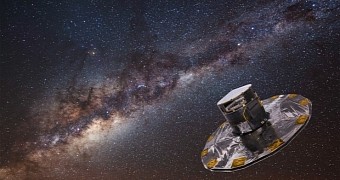In a new paper, researchers with the US' Princeton University and Sweden's Lund University argue that as many as 21,000 previously undocumented planets stand to be discovered by the end of the year 2018.
What's more, the scientists say that, all things considered, it could be that this figure will up to a whopping 70,000 by 2023. That's right, astronomers will soon have a heck lot more celestial bodies to study.
How will these planets be discovered?
According to the Princeton and the Lund University scientists behind these predictions, the European Space Agency's Gaia satellite will be the one to document the existence of these tens of thousands of planets outside our solar system.
The unmanned space observatory was launched back in December 2013. Thus, it has already spent well over 10 months floating about in space and studying the makeup of our home galaxy, the Milky Way, and will continue to do so for several years to come.
The European Space Agency says that, over a period of time of just 5 years, the Gaia satellite will collect data concerning the motion, appearance and distance from Earth of some 1 billion celestial bodies, mostly stars.
The space observatory will detect distant planets by studying their effect on their parent star. As detailed by astronomers, stars that seem to wobble do so because of planets orbiting them. Hence, wobbly stars are an indicator of planets nearby.
Just to put things into perspective, it need be said that the 1 billion celestial bodies the Gaia satellite will monitor during its 5-year mission account for about 1% of the Milky Way's overall population.
Who cares what the Gaia satellite is up to?
As detailed by the Princeton University specialists behind this study and their colleagues, the information obtained with the help of the Gaia satellite will make it possible for astronomers to gain a better understanding of the anatomy of the Milky Way.
The space observatory will essentially deliver a census of planets and planetary systems scattered all around our home galaxy. The data might also help scientists gain a better understanding of the evolution of the Milky Way.
“It’s not just about the numbers. Each of these planets will be conveying some very specific details, and many will be highly interesting in their own way,” study first author and Princeton University researcher Michael Perryman said in a statement.
“If you look at the planets that have been discovered until now, they occupy very specific regions of discovery space. Gaia will not only discover a whole list of planets, but in an area that has not been thoroughly explored so far,” he added.

 14 DAY TRIAL //
14 DAY TRIAL //